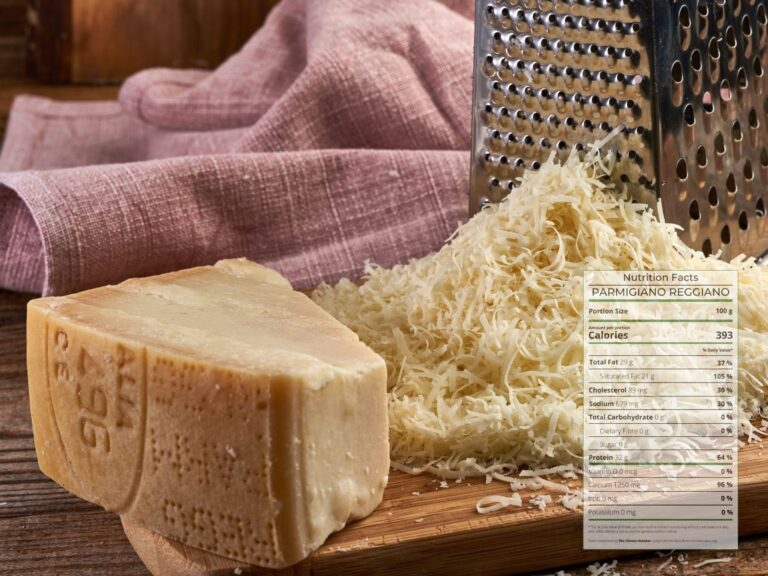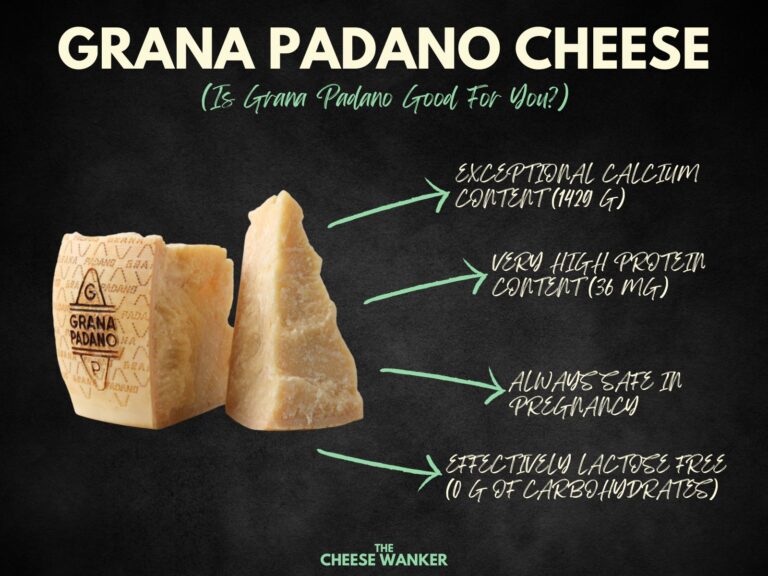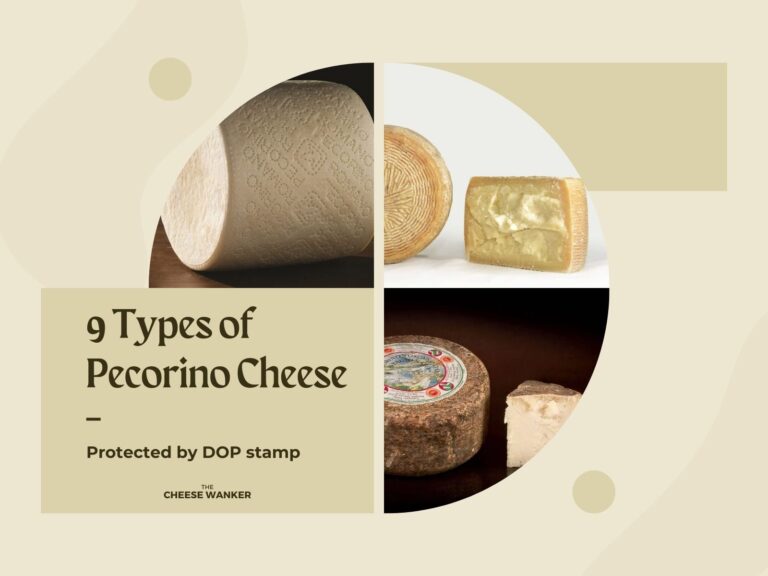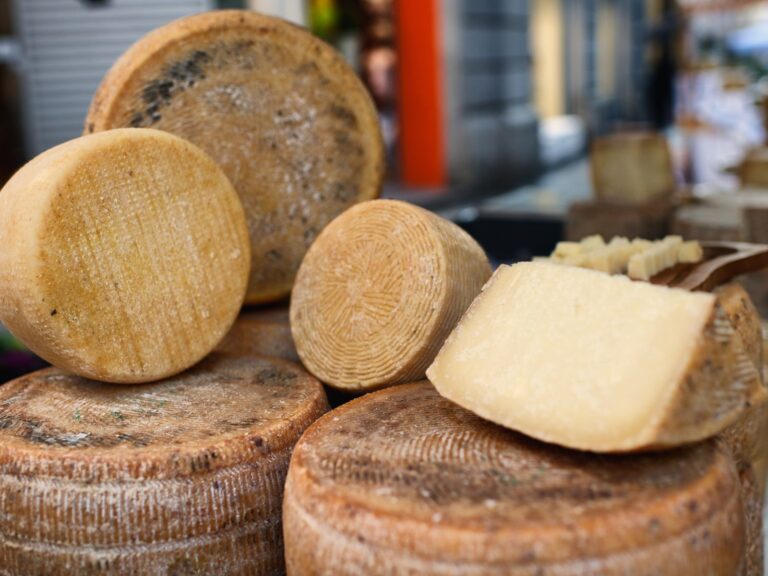Without a doubt, Parmigiano Reggiano is the king of Italian cheeses. But, do you know what Parmigiano Reggiano actually is? Read on to learn about this historic hard cheese, how it is made and how best to serve it.
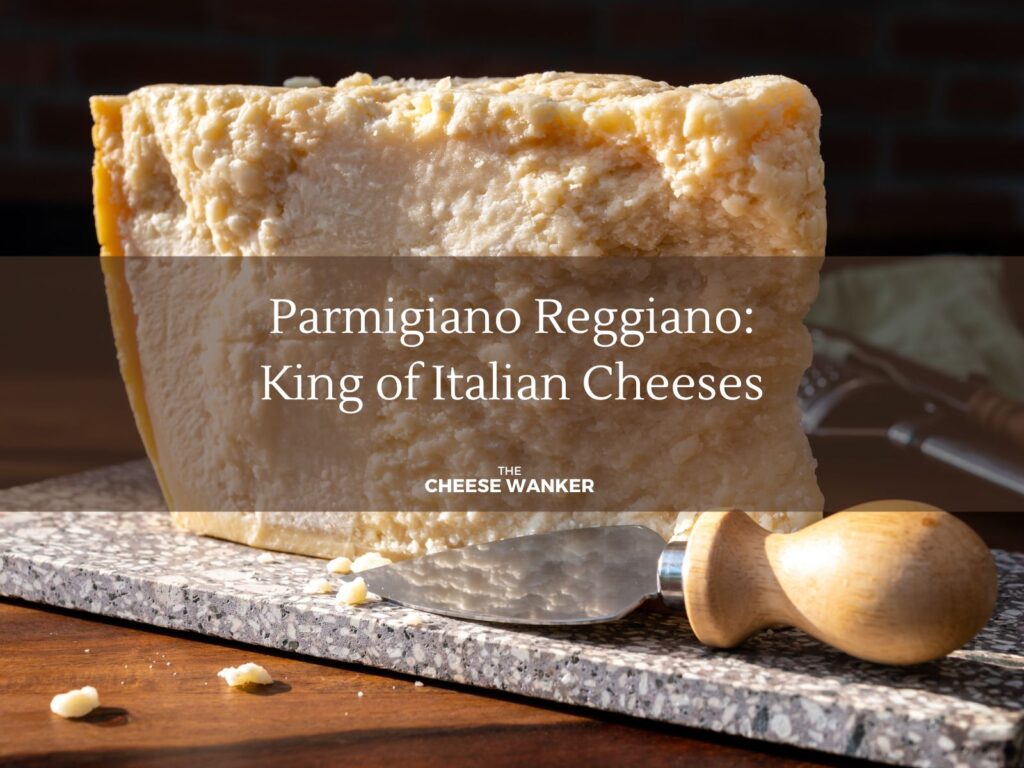
SEE ALSO: Could Provolone be Italy’s most versatile cheese? →
The history of Parmigiano Reggiano
I’m sure you’ve all seen wheels of this Italian hard cheese before. And you have definitely used it before in your kitchen. But do you know what actually is Parmigiano Reggiano?
Effectively, we can trace back the origins of this traditional Italian cheese to the Middle Ages. Back then, Benedictine and Cistercian monks were the first to produce what has now become an iconic cheese.
Since 1996, this Italian hard cheese has had a Protected Designations of Origin (PDO) stamp, thanks to the European Union. In essence, this stamp ensures that only cheeses created in accordance with tight guidelines are allowed to bear the name. You can read more about the differences between real Parmigiano Reggiano and Parmesan here.
Where does Parmigiano Reggiano come from?
Parma, Reggio Emilia, and Modena are the only provinces that produce this unique cheese. Bologna, to the left of the Reno river, is likewise included in the authorised regions. And Mantua, on the right bank of the Po.
Importantly, farmers in this region only give locally grown grass and forage to their cows. Silage, fermented feeds, and animal flour are strictly prohibited under the PDO.
How is Parmigiano Reggiano made?
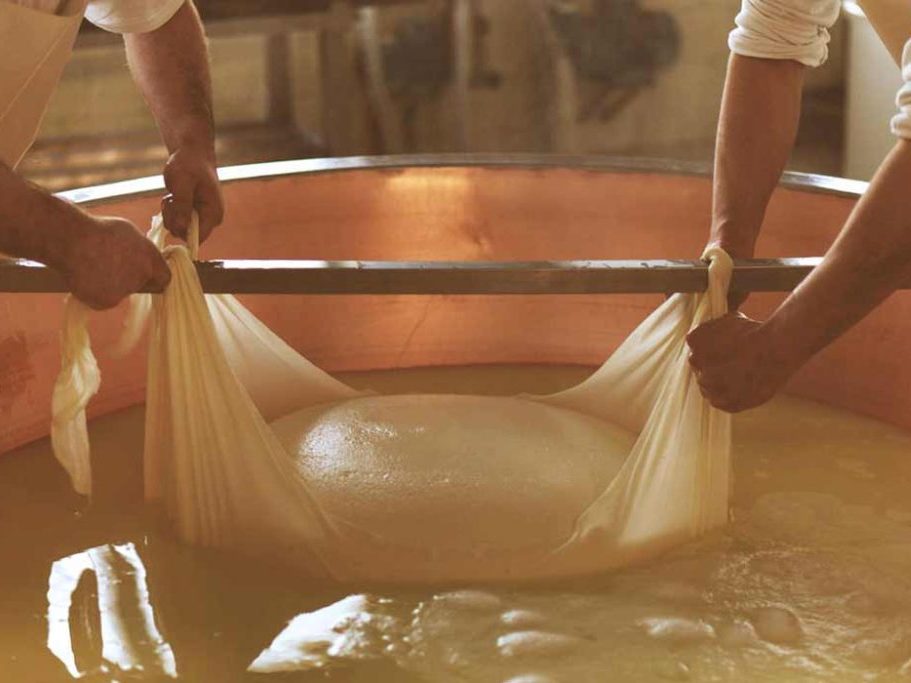
Made with raw milk
It all begins with the raw cow’s milk. The dairy collects evening milk from nearby farms and stores it in a vat overnight. Next morning, a cheesemaker skims the milk and blends it with freshly delivered whole milk.
In addition, they incorporate calf rennet and fermented whey into the recipe. Then, the maker uses a traditional tool called a spino to chop the curd into tiny granules once it has set.
Cooked in a copper cauldron
Next, they heat the curd to 55°C (130°F). At the bottom of the cauldron, this results in a massive single mass. Subsequently, two cheesemakers work together to lift this mass from the bottom by using a big cloth and a metal rod.
Then, they divide each mass in half and place each half into a separate mould to make a single cheese wheel. You can read more about the production methods here.
Applying a casein plate
Once the cheese is formed, the maker applies a unique casein plate to each wheel. From this point onwards, this will be its identity card and can be traced back to its production site. A few days later, they immerse the wheels in a saturated brine solution. Indeed, this marks the final step of the production process.
A slow maturation process
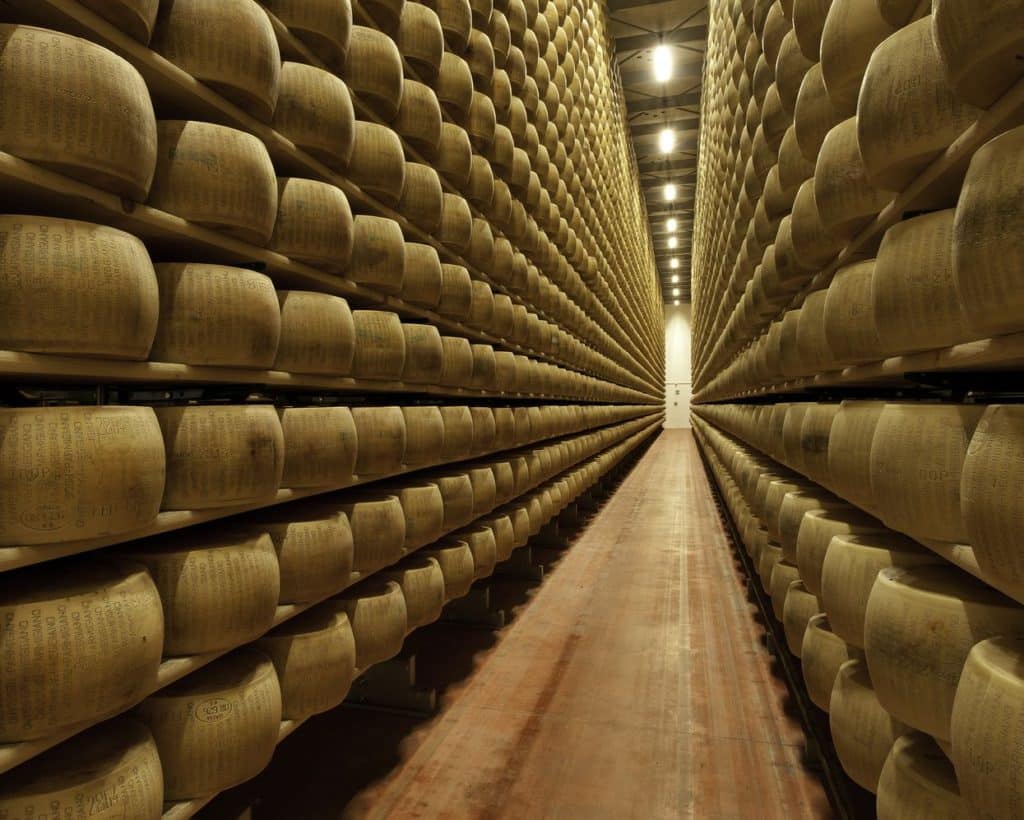
Undeniably, the life cycle of Parmigiano Reggiano is a long and slow one. Significantly, it follows the natural rhythm of the seasons in Northern Italy.
Additionally, the PDO dictates that even the “youngest” wheels of Parmigiano Reggiano have to be matured for a minimum of 12 months. At this point, each individual wheel is assessed and then selected for further maturation up to 40 months.
Unsurprisingly, the hard rind around this cheese poses some challenges to quality testing.
The Parmigiano Reggiano Consortium
The hard rind around this cheese, unsurprisingly, makes quality testing difficult. At 12 months, a member of the Parmigiano Reggiano Consortium carries out a peculiar test that does not compromise the cheese. Remarkably, they can detect any textural irregularities inside the cheese by tapping the wheel with a hammer.
They next stamp a hot iron brand on each wheel that meets the requirement, formally recognising it as Parmigiano Reggiano.
How to cut Parmigiano Reggiano
Cracking open an entire wheel of Parmigiano Reggiano is actually a mesmerising and artful process. It takes years of practice to master. For starters, you will need three different Tagliagrana knives. Using the tip of one, the cheesemonger carves a line along the middle and all around the wheel to demarcate 2 halves of equal weight and size. Afterwards, they carve the rind of the cheese using a second knife, following the previously marked line.
The next step actually involves planting 2 knives at the ends of the wheel and a third one in the centre. Gently wiggling the knives around will then crack the cheese apart. You can read more about the art of carving Parmigiano Reggiano here.
How to store Parmigiano Reggiano
So you’ve brought home a freshly cut piece of Parmigiano Reggiano. What should you do with it? Firstly, you will need to keep it refrigerated between 4°C and 8°C. Moreover, it is best kept in waxed paper or a food grade beeswax wrap.
Besides, you will want to store it in a vegetable drawer or any other secluded section in your fridge. This ensures temperature and humidity control to preserve the cheese and protect it from contamination.
Can you freeze Parmigiano Reggiano?
One final note, you should never freeze an intact chunk of cheese. If you do want to extend its shelf life, you can however grate the cheese and freeze it once grated. While this is not ideal, it might help reduce wastage.
What does Parmigiano Reggiano taste like?
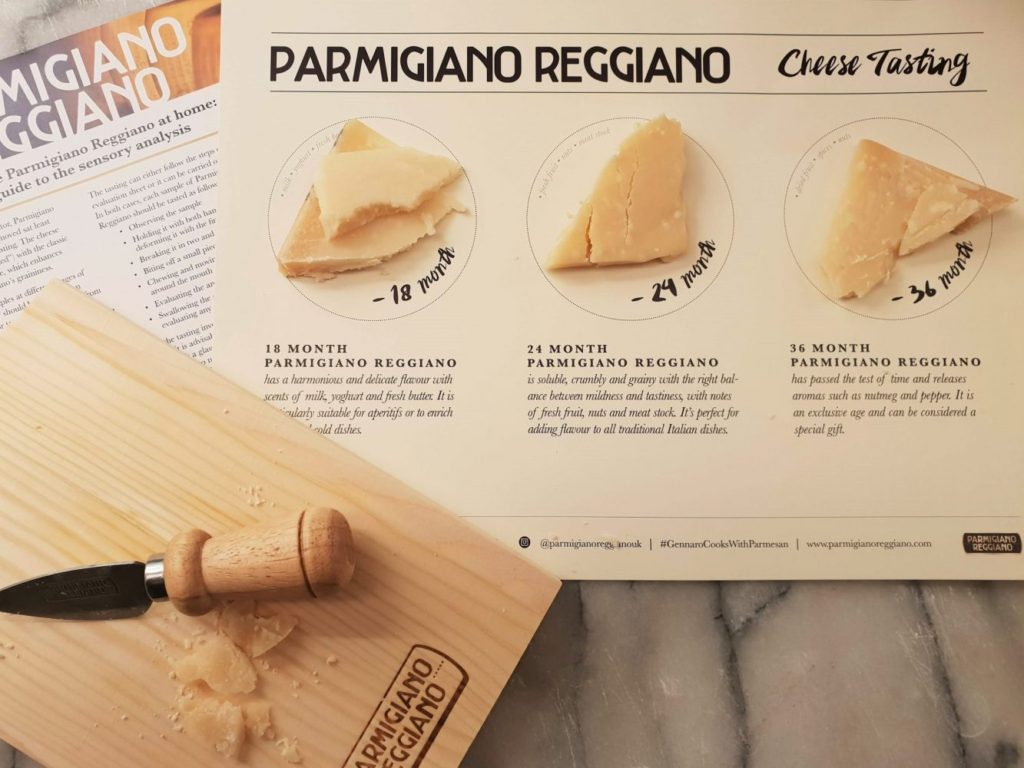
Unsurprisingly, the flavour of Parmigiano Reggiano varies depending on its age.
18 months
At 18 months, the cheese has a harmonious and delicate flavour with scents of milk, yoghurt and fresh butter.
24 months
On the other hand, a 24 month wheel is soluble, crumbly and grainy with the perfect balance between mildness and tastiness. Moreover, you can expect notes of fresh fruit, nuts and meat broth.
36 months
Finally, at 36 months, the wheels start to release aromas such as nutmeg and pepper. The flavour is incredibly complex with a range that encompasses all the notes mentioned above.
How to serve Parmigiano Reggiano
Parmigiano Reggiano is complex enough to be served on a cheese board but is also an excellent ingredient in cooking.
Cooking with Parmigiano Reggiano
A Parmigiano Reggiano at 24 months is an excellent addition to a number of different dishes. Due to its complex flavour and moist texture, it can be grated fresh onto a rocket and pear salad. Or even cooked into your next pasta sauce.
Pairing Parmigiano Reggiano
This incredibly versatile hard cheese pairs well with white and red wines. Enjoy as a table cheese with a Pinot Grigio, Marsanne or Roussane. As for red wine, try fruity wines with high acidity and low tannins like Corvina, Barbera and Gamay.
Is Parmigiano Reggiano healthy?
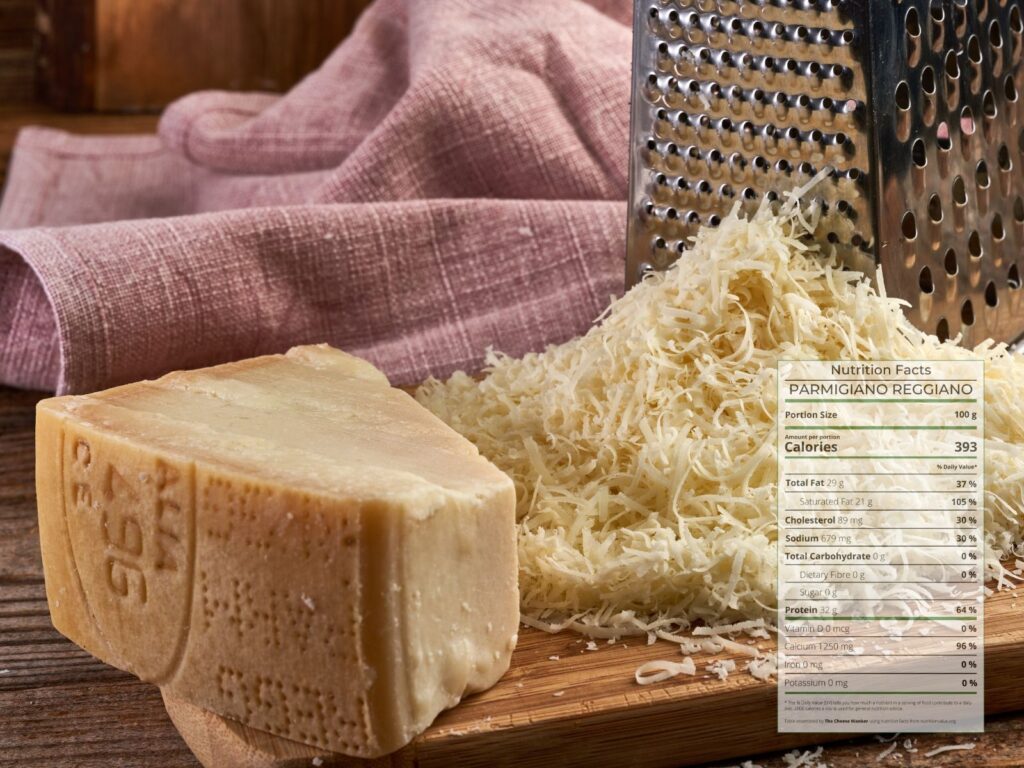
With its low lactose content, moderate fat and cholesterol levels, and high protein and calcium content, Parmigiano Reggiano is a versatile and healthful addition to various diets.
It caters to individuals with lactose intolerance, supports muscle health, aids in calcium absorption, and can be safely consumed during pregnancy. While mindful consumption is recommended due to its sodium content, Parmigiano Reggiano remains a delicious and nutrient-rich option that elevates both culinary creations and overall nutrition.
You can read our complete review of the nutritional facts for Parmigiano Reggiano by clicking here.
How do you like to eat Parmigiano Reggiano?
Now that you know what it is that makes Parmigiano Reggiano unique, you will be able to make an educated decision when you go shopping for cheese. As well as being an exceptional table cheese, Parmigiano Reggiano can be used in a variety of dishes.
What are your favourite recipes with this hard cheese? Drop me a comment below.
